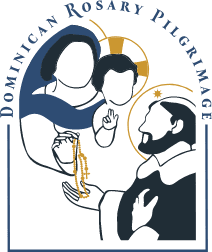Though the first Dominican Rosary Pilgrimage is a momentous event in the life of the Church, it is not the first national Rosary pilgrimage to take place in America.
On October 30, 1971, thousands of pilgrims led by Fr. Patrick Peyton, CSC, journeyed to the Basilica of the National Shrine of the Immaculate Conception in Washington, DC. The pilgrimage was a part of Fr. Patrick’s Family Rosary Crusade, a series of national and international pilgrimages dedicated to strengthening families through daily praying of the Rosary.
Fr. Patrick Peyton was raised in a poor, farming family in Ireland that had a strong devotion to family prayer. Every night, his family would kneel together to pray the Rosary together before going to bed. The Peyton family’s dedication to the Rosary strengthened their bonds of love to face the difficulties of poverty, illness, and immigration with trust in the Blessed Mother’s patronage. Fr. Patrick experienced Mary’s patronage in a direct way through a miraculous recovery from tuberculosis after entrusting himself to Our Lady of the Rosary. After his ordination to the priesthood, Fr. Patrick sought to repay Mary’s care for him.
Recalling his own family, Fr. Patrick began a world-wide campaign to spread the devotion of the family Rosary. He took as his motto, “The family that prays together, stays together.” He spoke to crowds of hundreds-of-thousands about the power of the Rosary to protect and strengthen families, and families around the world responded by dedicating themselves to praying the Rosary every day. Family prayer places God at the center of your family’s life. The practice of praying the Rosary together places your family under Mary’s protection and draws you closer to her son, Jesus.
Fr. Patrick Peyton was declared Venerable by Pope Francis in 2017 and his cause for canonization is ongoing. This year is the thirty-first anniversary of his death, but his message that the family that prays together, stays together is one that continues to be proclaimed and to bear fruit through daily family Rosaries.
When the Dominican Rosary Pilgrimage meets in Washington, DC, fifty-two years after Fr. Patrick’s crusade, we will preach to the world that the Rosary is still the prayer of the family. The Rosary is the perfect prayer to protect and strengthen the family’s bonds of love through the intercession of our most loving mother.

